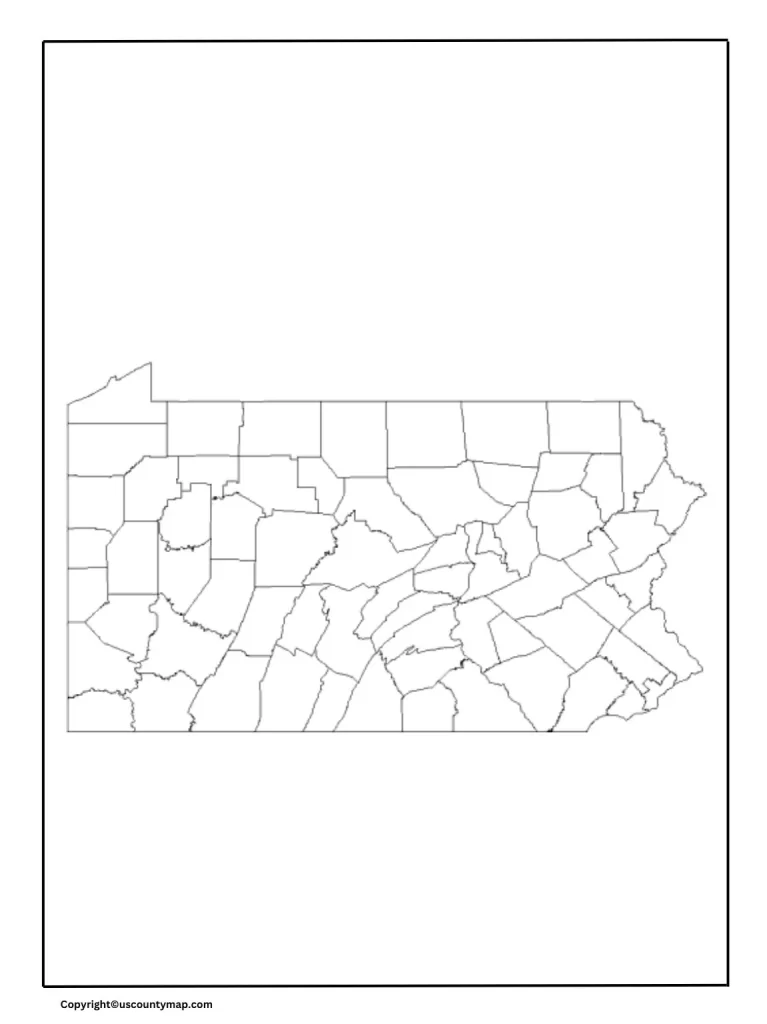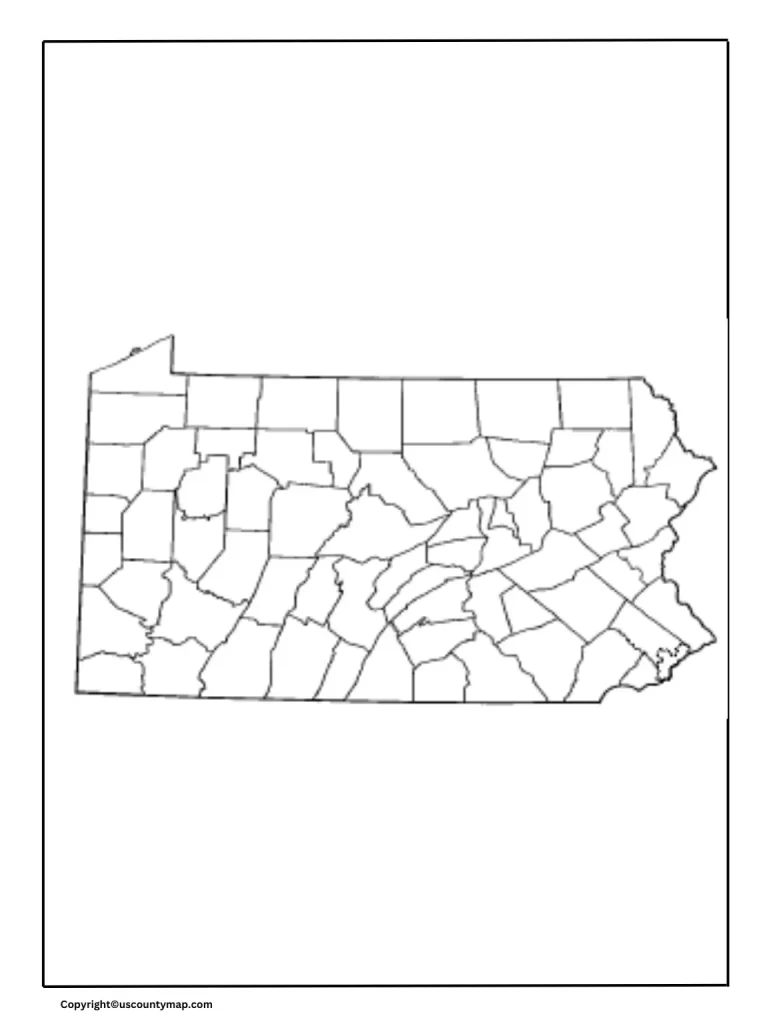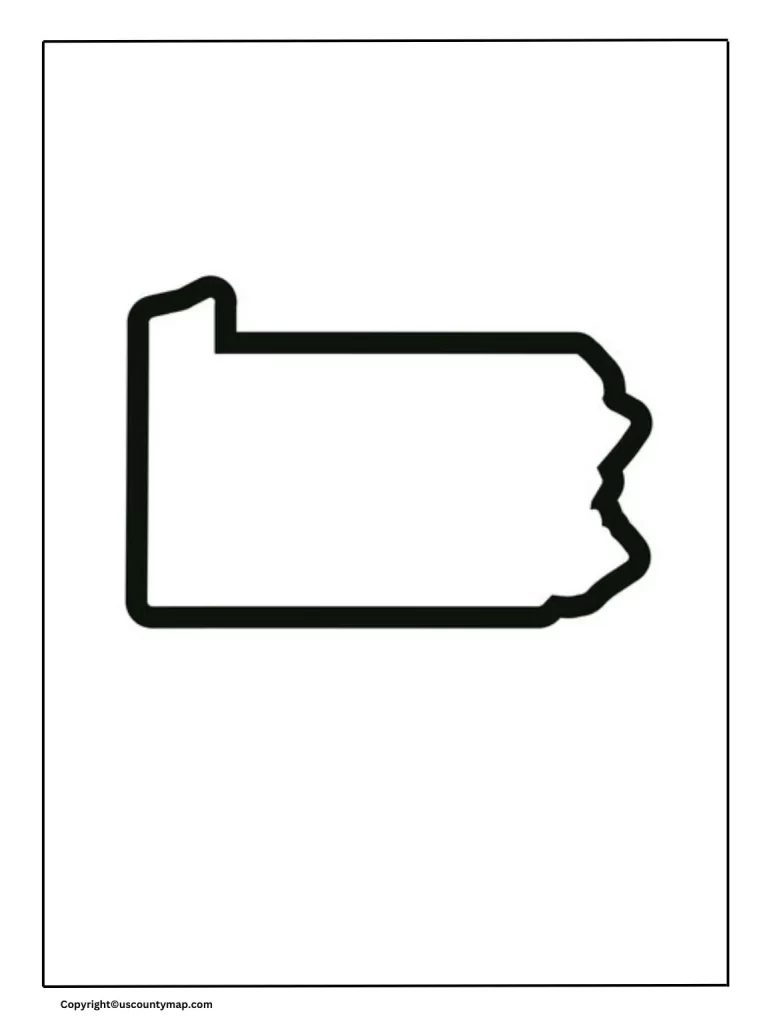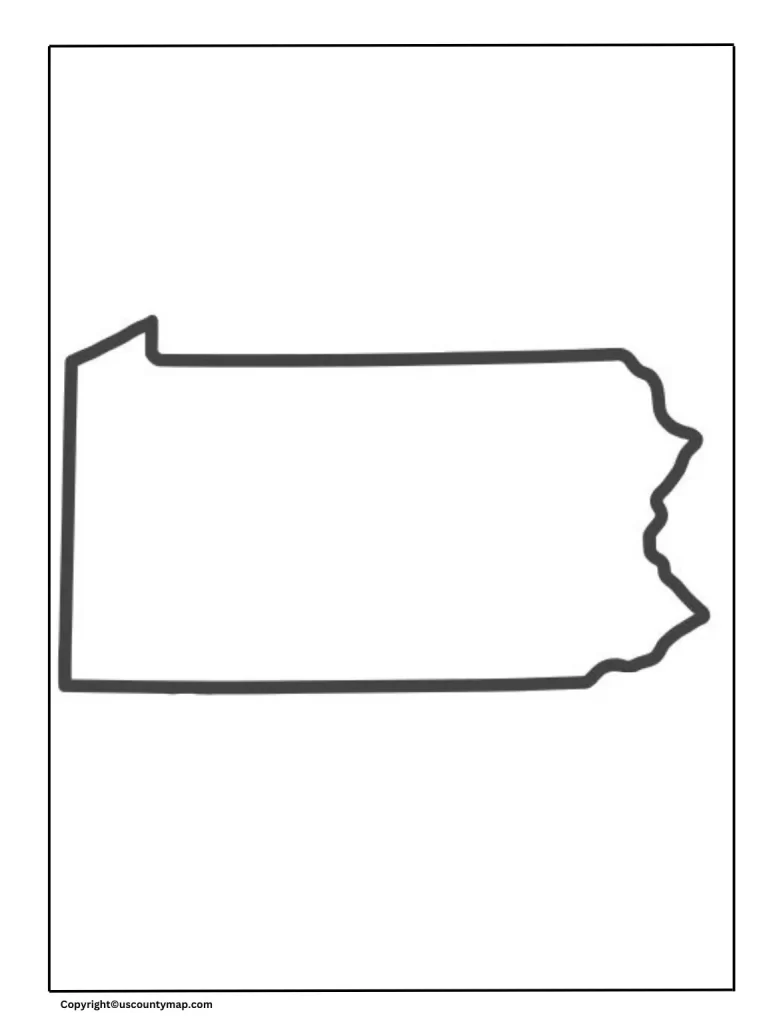Blank Map of Pennsylvania – Pennsylvania is officially a Commonwealth of Pennsylvania, a historically rich, culturally diverse and naturally beautiful kingdom. It is located in the Northeast and Middle-Classes of the United States and is the land area and the 33rd largest state with the 5th population.
An empty map of penylvania is a highly useful resource for many users, which gives detailed information on the diverse geography, infrastructure and resources of the state. For local and tourists, the map is a navigation tool that guides them to cities, towns, roads, and natural characteristics such as Appalachian mountains and delaware and delaware and smiles. U Companies use maps to study market areas, to streamline logistics and plan sites of new businesses.
Blank Map of Pennsylvania

In education, Blank Map of Pennsylvania are an essential tools in imparting students’ knowledge about the geography, history, and demography of the state. Maps are utilized by environmentalists and conservationists to locate and preserve natural resources, monitor environmental developments, and strategize on conservation. Additionally, political campaigns and government departments utilize maps in outlining electoral boundaries, administrating public services, and distributing resources. Overall, a Pennsylvania map is an integrated instrument that facilitates all manner of activities from routine navigation to planning and environmental management
Population
- Size: As of the 2020 census, Pennsylvania has a population of about 13 million individuals.
- Diversity: The state’s population is diverse, with large populations of residents of German, Irish, African American, Italian, and Polish heritage. The largest city, Philadelphia, is especially diverse.
- Urban and Rural Partition: Pennsylvania has a combination of urban and rural areas. The major cities are Philadelphia, Pittsburgh, Elenetown and Eri. Rural areas are dominated by small cities, fields and forests.
Geography and Area
- Size: Pennsylvania has an area of about 46,055 square miles.
- Topography: There is a diverse landscape in the state, with a diagonal, rolling hills and plains across the Apalachian mountain state.
- Waterways: Principal rivers are the Delaware River, the Susquehanna River, the Allegheny River, and the Ohio River. Pennsylvania also borders Lake Erie in the northwest corner.
- Borders: It is bordered by New York to the north, New Jersey to the east, Delaware to the southeast, Maryland to the south, West Virginia to the southwest, and Ohio to the west.
Forests and Natural Resources
- Forested Areas: Approximately 58% of Pennsylvania is covered by forests, making it one of the most heavily forested states in the country. The Allegheny National Forest is a significant forested area in the northwestern part of the state.
- Biodiversity: These forests are home to a wide variety of flora and fauna, including white-tailed deer, black bears, and numerous bird species.
- Natural Resources: Pennsylvania has abundant natural resources, including coal, natural gas, oil, and timber. The Marcellus Shale formation, in particular, has been a major source of natural gas extraction.
Printable Map of Pennsylvania
Economy and Facilities
- Economy: Pennsylvania’s economy is varied with predominant industries being manufacturing, agriculture, energy production, and services. The important sectors here are steel, machinery, electronics, food processing, and chemicals.
- Agriculture: Pennsylvania leads in mushroom, apple, Christmas tree, and dairy product production. Lancaster County is famous for fertile lands and a huge Amish community.
- Education and Research: Pennsylvania boasts a number of topnotch universities and colleges, including the University of Pennsylvania, Carnegie Mellon University, Pennsylvania State University, and Lehigh University. They are all big hubs for research and innovation.
- Healthcare: The state has a strong healthcare system with many hospitals, research centers, and medical schools. The University of Pittsburgh Medical Center (UPMC) and Penn Medicine are good examples.
- Transportation: Pennsylvania boasts a wide network of transportation, with prominent interstate highways such as I-76 (Pennsylvania Turnpike), I-80, and I-95. The state also features substantial rail and air transportation infrastructure, with Philadelphia International Airport and Pittsburgh International Airport being major centers.
Pennsylvania Map Worksheet
Historical and Cultural Significance
- Historical Landmarks: Pennsylvania is replete with American history. It is here in Philadelphia that the Declaration of Independence and the United States Constitution were signed. Among other historical attractions are Gettysburg National Military Park, Independence Hall, and the Liberty Bell.
- Cultural Institutions: The state is full of museums, theaters, and cultural sites. The Philadelphia Museum of Art, the Carnegie Museums of Pittsburgh, and the Pennsylvania Academy of the Fine Arts are well-known cultural institutions.
- Sports: Pennsylvania boasts a rich sports culture with professional franchises like the Philadelphia Eagles (NFL), Pittsburgh Steelers (NFL), Philadelphia Phillies (MLB), Pittsburgh Pirates (MLB), Philadelphia 76ers (NBA), and Pittsburgh Penguins (NHL).
Pennsylvania Map Outline [Blank Map of Pennsylvania]
Recreation and Tourism
- Outdoor Recreation: Pennsylvania provides unlimited possibilities for outdoor recreation, including hunting, camping, fishing, and hiking. The Appalachian Trail crosses Pennsylvania and provides scenic trekking trails.
- Tourism Sites: Main tourist sites are the Poconos for resort areas and skiing, Hersheypark for entertainment for family and children, and the Amish Country around Lancaster for experiencing the culture.
- State Parks: Pennsylvania boasts a highly developed state park system with more than 120 parks, such as Presque Isle State Park on Lake Erie and Ohiopyle State Park in the Laurel Highlands.
Overall, Pennsylvania is a highly diverse and historic state, which has a mix of urban refinement, rural beauty, natural splendor, and cultural wealth. It is a vibrant and dynamic state due to its population, large forests, strong economy, and diverse range of facilities.



